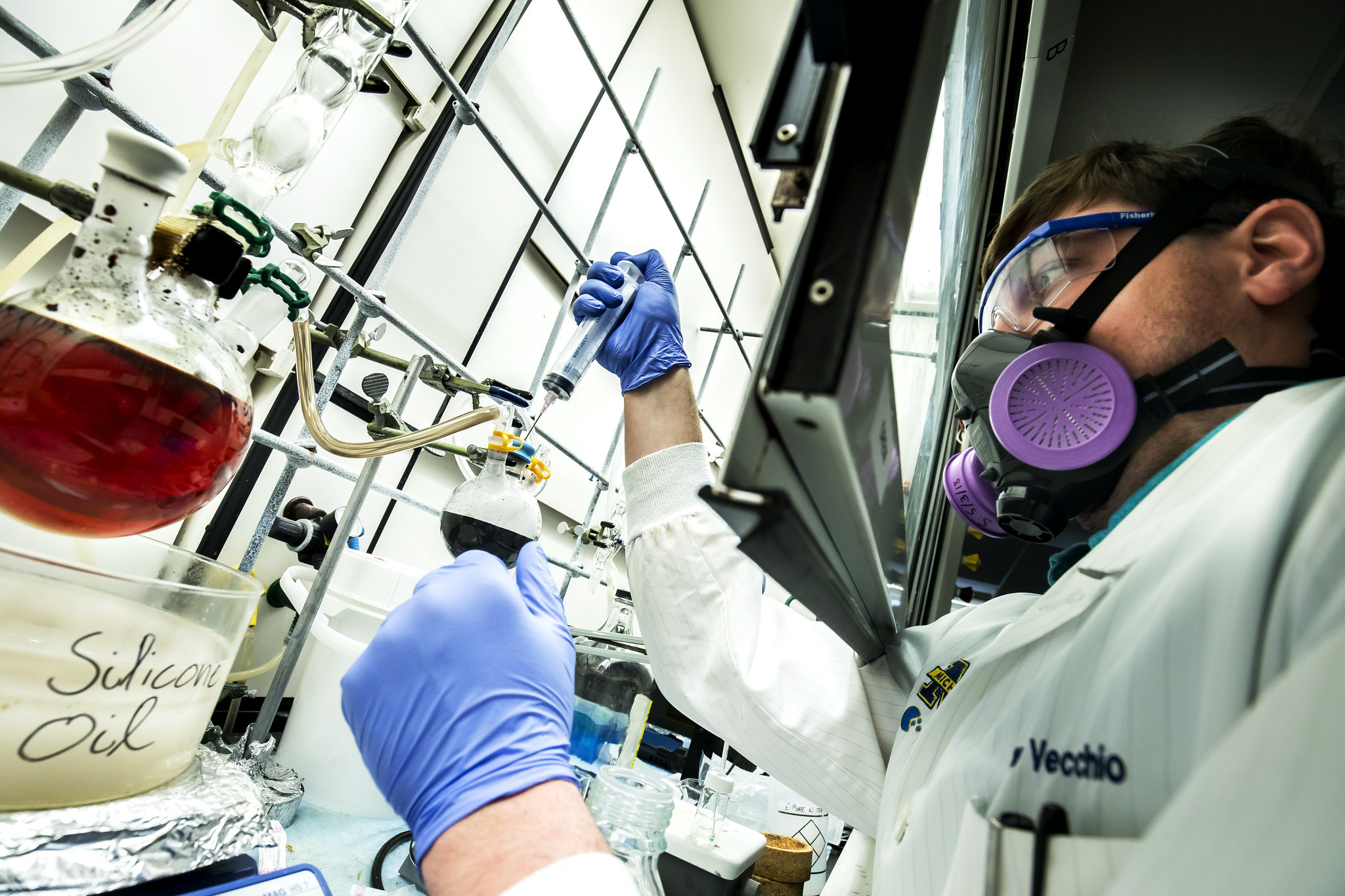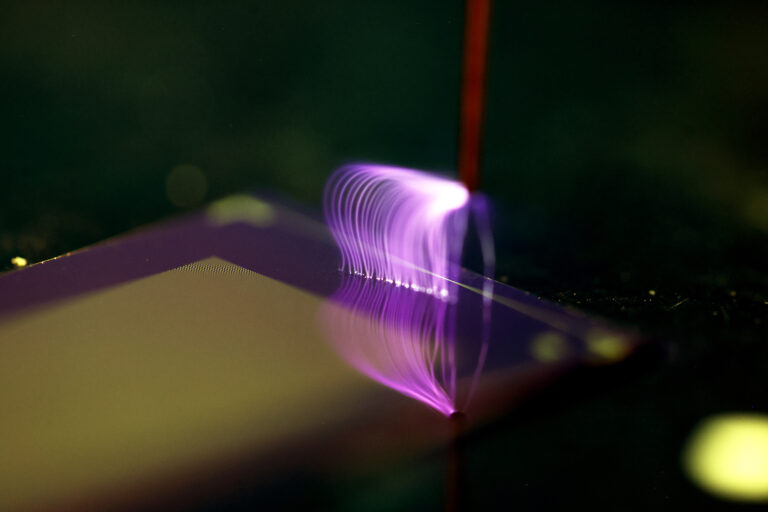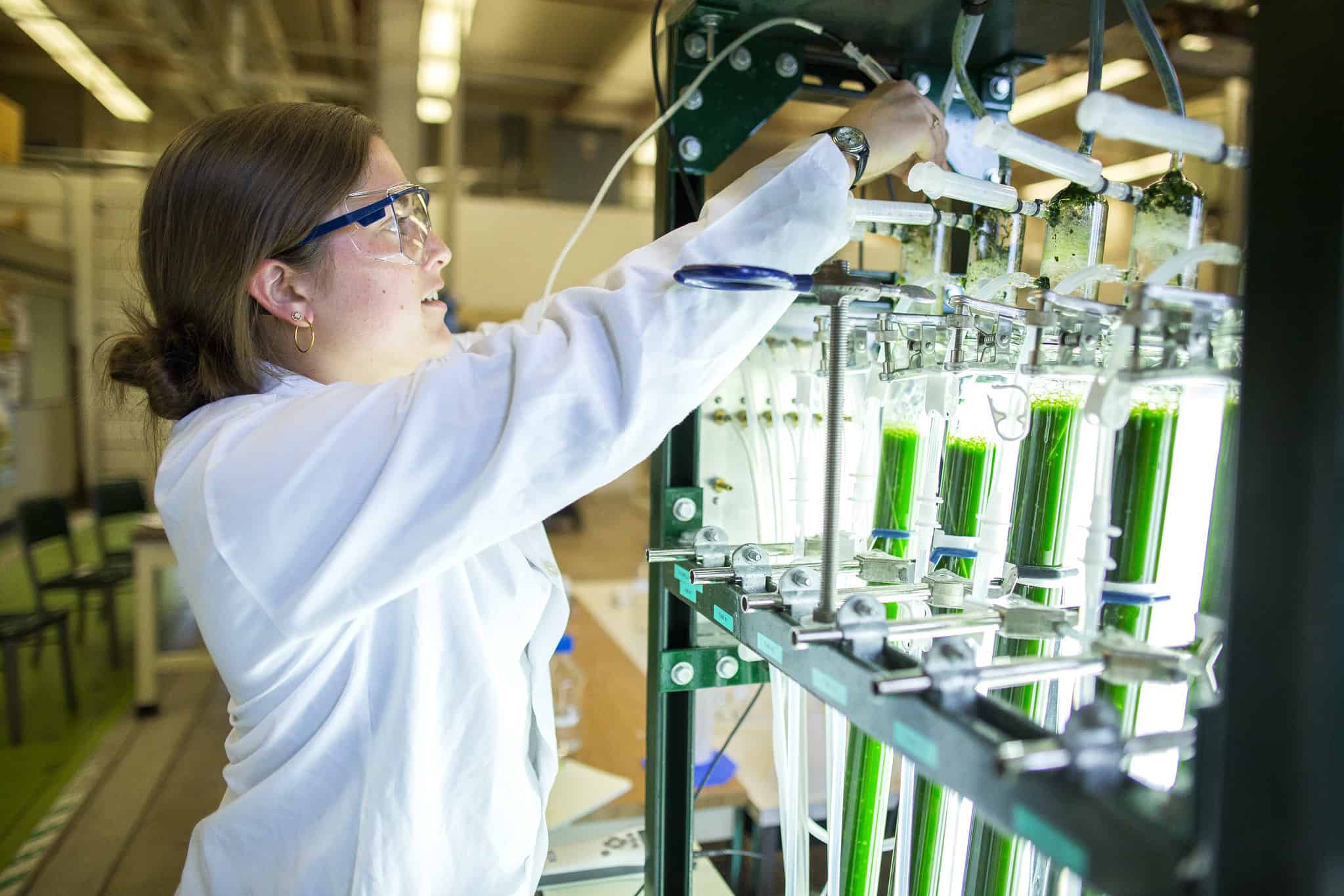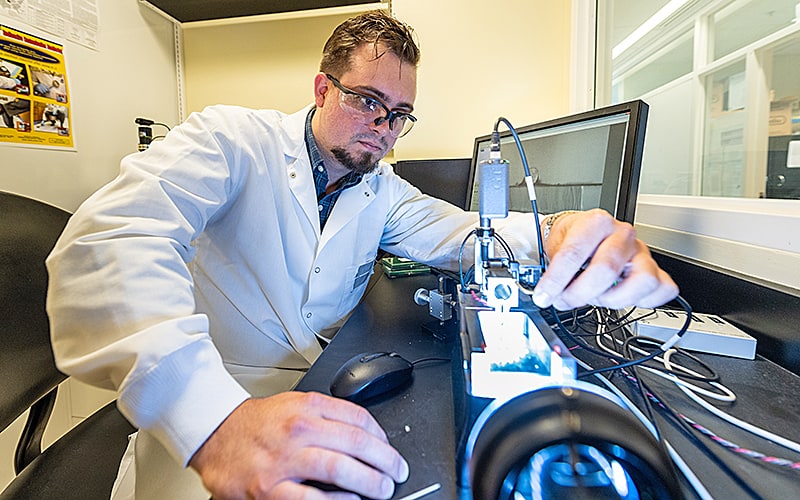
Research
Solving the complex, critical problems of our time
RESEARCH AREAS
We are guided by a deep understanding of chemical engineering fundamentals combined with a drive to innovate and design new materials, tools and platforms for a better future.

STRATEGIC VISION FOR RESEARCH
Furthering our bold ideas for the future.

FACILITIES
A mammalian cell culture lab, a clean room and electron microbeam analysis at your service. Find out more about our top-notch facilities

The chip the Nagrath Lab developed traps and concentrates tiny numbers of cancer cells from blood samples in order to identify whether a cancer treatment is working. Using this chip doctors can monitor the amount of cancer cells in a patient’s blood. This kind of data could allow clinicians to adapt cancer treatments to patients’ needs and improve treatment outcomes. Jolly was instrumental in allowing Nagrath and team access to clinical samples for them to test and in arranging the clinical experiment.
Photo: Brenda Ahearn/University of Michigan, College of Engineering, Communications and Marketing
UNDERGRAD RESEARCH EXPERIENCE
Seek out opportunities to work with world-class faculty and graduate students.

The chip the Nagrath Lab developed traps and concentrates tiny numbers of cancer cells from blood samples in order to identify whether a cancer treatment is working. Using this chip doctors can monitor the amount of cancer cells in a patient’s blood. This kind of data could allow clinicians to adapt cancer treatments to patients’ needs and improve treatment outcomes. Jolly was instrumental in allowing Nagrath and team access to clinical samples for them to test and in arranging the clinical experiment.
Photo: Brenda Ahearn/University of Michigan, College of Engineering, Communications and Marketing
PARTNERS IN INDUSTRY
Faculty at the cutting edge of their fields can help find solutions to problems.

The chip the Nagrath Lab developed traps and concentrates tiny numbers of cancer cells from blood samples in order to identify whether a cancer treatment is working. Using this chip doctors can monitor the amount of cancer cells in a patient’s blood. This kind of data could allow clinicians to adapt cancer treatments to patients’ needs and improve treatment outcomes. Jolly was instrumental in allowing Nagrath and team access to clinical samples for them to test and in arranging the clinical experiment.
Photo: Brenda Ahearn/University of Michigan, College of Engineering, Communications and Marketing